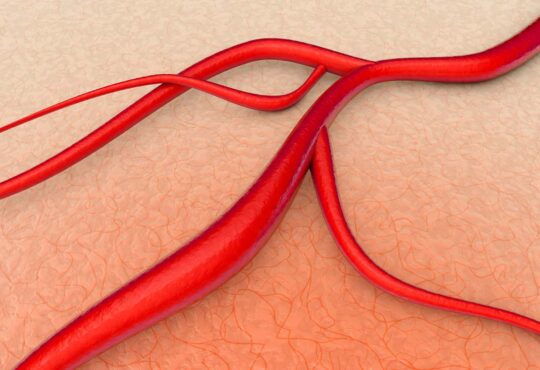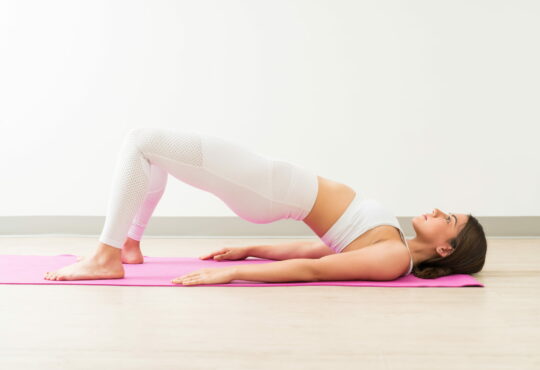The Ancient 12 Second Breathing Technique to Lower Stress That Ukrainians Are Now Using to Cope With Trauma

Now you too can experience optimal healthy breathing to balance your nervous system . . . even without joining a religious order, meditating ten hours per day, or living on top of the Himalayan Mountains.
Practicing this technique just twenty minutes a day helps you to:
* Equalize your sympathetic and parasympathetic nervous system (highly important because almost all of us suffer from inflammation and stress)
* Lower your blood pressure
* Reduce anxiety and trauma (teachers are now using it to help Ukrainians, including children, cope with the war)
These health benefits are still being studied and documented by modern science, but the basic technique has been in use for thousands of years. The short prayers or mantras religious orders chant in languages from Sanskrit to Latin to English inevitably use the same formula. These phrases take 5-6 seconds to repeat – and that time is important.
You may find this under different words because people have been able to file trademarks even though we’re talking about a way of breathing.
There’s probably an app for it but buried within a hundred “customizable” features and useless variations.
But there ARE videos on YouTube and Spotify that make your practice even more precise than the ancient Tibetan lamas could be.
What is the Technique?
Coherence breathing.
The good news: it’s as simple as possible. No complicated pranayama formulas or violent blowing out like Wm Hoff.
You do inhale from your diaphragm, but you don’t make an extensive effort to completely fill your lungs from bottom to top.
When exhaling, you don’t make an extensive effort to completely empty your lungs from top to bottom.
Therefore, it’s NOT like many “deep breathing” techniques.
You also do NOT hold your breath after either the inhale or the exhale.
The aim is to relax, not to generate additional tension.
The bad news: it’s almost too simple and easy. I’ve had trouble relaxing because I’m used to holding my breath.
Your Autonomic Nervous System Controls Much of Your Body
It takes care of things you don’t or can’t do consciously, such as digestion, heart rate, blood pressure, breathing and much more.
These are automatic – autonomic – that is, your body does them without your knowledge or control. That’s mostly a good thing, because we’d forget to keep our hearts beating.
But – if you read carefully – you may have noticed one thing that is NOT fully “automated.” It usually runs on autopilot, but we CAN consciously control it:
Breathing.
Conscious breathing, it, therefore, turns out, is key to our ability to influence our autonomic nervous systems in hugely beneficial ways.
The Two Parts of the Autonomic Nervous System
They are sympathetic and parasympathetic. Both of these systems send signals to your brain – and to other major parts of your body via the vagus nerve.
The Sympathetic Nervous System (SNS), despite its name, is NOT “sympathetic.” Its focus is on preparing your body to defend itself against threats. It’s the “fight or flight” response. It speeds up your heart and releases adrenaline.
The Parasympathetic Nervous System (PNS) handles your “rest and digest” biological processes. Relax, the cave bear is dead. Chill. It slows your heartbeat and reduces your blood pressure, among many other healthy functions.
Both are necessary for survival.
You need SNS to escape and deal with threats. You need PNS to heal, recover and rebuild after both physical damage (disease and injury) and emotional traumas.
But Modern Life Doesn’t Let Us Chill
Our ancestors fought or ran from cave bears and other animals, but we can’t escape the threats of our everyday lives.
We worry about being laid off, going out of business, the stock market crashing, the wars around the world and numerous things we can hear, see or imagine – but can’t control or stop.
As a result, our SNS response is much stronger than our PNS response.
That’s the chronic stress we’ve all read about, and chronic stress is bad for your health.
Relaxation is the obvious solution, but how do we force ourselves to relax?
That involves a lot of muscles, biochemicals and so on we can’t control EXCEPT by breathing.
Evenly Balanced Inhalation/Exhalation Means an Evenly Balanced Autonomic Nervous System
It also balances the flow of your blood circulation.
Your brain waves, metabolic rate, and heartbeat go into the zones healthiest for them.
Yes, you can make breathwork a LOT more complicated, but research indicates this coherence breathing gives the maximum benefit for the least effort.
This breathing technique does slow down your heartbeat. That by itself reduces feelings of anxiety and overwhelm.
Plus, it increases Heart Rate Variability (HRV) – a key indicator of autonomic nervous system health and resilience. Our heart rates are supposed to fluctuate in response to second-by-second variations in our bodies.
How to Do It
Sit or lie in a comfortable position.
You’re going to breathe in and out through your nose only. Keep your mouth closed.
Inhale for around 5-6 seconds.
Exhale for around 5-6 seconds.
With that count, a full breath lasts about 12 seconds. That’s a rate of 5 breaths per minute.
Relax into the breathing.
Keep going for 20 minutes. More if you like – there’re no set rules or limits.
As often as you like, consistent daily practice will give you the best results.
One teacher of this method, Dr. Richard Brown, advises NOT counting to yourself.
Instead, you can find videos on YouTube and Spotify where you follow a tone, a ringing bell or music.
The tone rings. You inhale.
The tone rings again. You exhale.
Continue for 20 minutes.
You can perform this in the morning, afternoon or evening – whenever you have time.
Because it’s so relaxing, it great just before bed.
Variations
You can use the same videos to “box breathe” instead. The benefits are similar.
With box breathing, you just add an equal-length breath-hold after the inhale and after the exhale.
That way, your breath is a four-part “box.”
That is: Inhale – Hold – Exhale – Hold.
All for 5-6 seconds.
You can also lengthen the exhale, so you’re inhaling for a count of 4-5 and exhaling for a count of 6-7 – still five breaths per minute.
Try this for 21 days in a row, and you’ll find you automatically begin breathing this way whenever you’re faced with a stressful situation.
That will enable you to stay calm and relaxed – so you’re better able to figure out the most effective response.
https://www.ncbi.nlm.nih.gov/pmc/articles/PMC5624990/
https://www.ncbi.nlm.nih.gov/pmc/articles/PMC5900369/
https://www.scientificamerican.com/article/proper-breathing-brings-better-health/
https://www.youtube.com/watch?v=p2rXctGxilU&t=664s
https://www.youtube.com/watch?v=ZAxcPGe_Tf0&t=552s
https://www.youtube.com/watch?v=QH8qkaZ3qfQ
https://www.amazon.com/Breath-New-Science-Lost-Art-ebook/dp/B0818ZZNLR/
https://www.ncbi.nlm.nih.gov/books/NBK539845/
https://www.firstbeat.com/en/science-and-physiology/heart-rate-variability/







